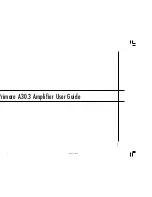
DCM000000054 Rev Q
3-1
Chapter 3
Antenna Installation
3 Introduction
This chapter contains antenna installation and warning information for the LNKA Modules.
3.1 Antenna Installation
•
•
•
•
•
•
All antenna installation to be performed by qualified technical personnel only.
Antenna installation instructions and locations below are for the purpose of satisfying
FCC RF Exposure Compliance requirements.
Note! If multiple LinkNet™ Modules are used, the Instructions below apply to the
composite power output of all Modules when transmitting simultaneously.
The
Roof Top Antenna or Antennae
for linking to the
Donor Site(s)
is/are directional (high
gain) Antennae, fixed-mounted physically on the side or top of a building, or on a tower.
The Antenna Gain must be no more than 20 dBi.
Note!
If multiple LinkNet™ Modules are used with output combiners into any one
Antenna, and/or multiple Antennae are used on one Roof Top, then the sum of
composite powers into all Roof Top Antennae must not exceed 20 Watts maximum.
The
Roof Top Antennae
location should be such that only qualified technical personnel
can access it, and that under normal operating conditions no other person can touch the
antenna, or approach within 10 meters of the antenna.
For the
Cellular Uplink Band
(824-849 MHz) the
Roof Top Antenna or Antennae
for
linking to the
Donor Site(s)
has the added restriction that the Effective Radiated Power
(ERP) must not exceed 7 Watts (+38 dBm). Thus, if the AGC is set (as per the Carrier
Derating Chart) to +28 dBm as an example, the maximum allowed antenna gain must be
no more than 10 dBi.
The
In-Building Antenna
connection is via a coaxial cable distribution system with signal
taps at various points connected to the fixed-mounted
Indoor Antennae
. The
Indoor
Antennae
are simple 1/4 wavelength (0 dB Gain) types. They are used with Powerwave
Technologies’ 12, 16, or 20 dB cable taps. As such the maximum EIRP will be at the first
tapped antenna, which will be 12 dB below the maximum signal level of the LinkNet™
(+40 dBm); +28 dBm, or 0.63 Watts EIRP. These antennae are to be installed such that
no person can touch the antenna, or approach within 0.2 Meters.
Note! If multiple LinkNet™ Modules are used with output combiners, then the composite
power output of all Modules transmitting simultaneously must meet this maximum
EIRP requirement.
Please consult Powerwave Technologies Inc. for assistance as required.



































